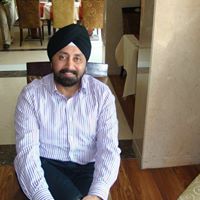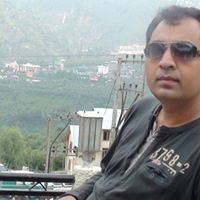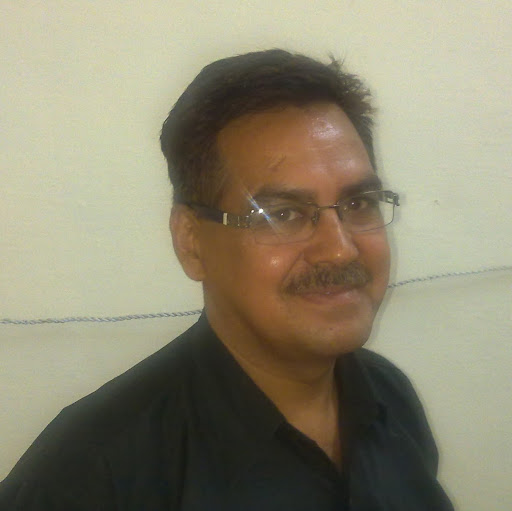Raj Makkar
from West Hollywood, CA
Raj Makkar Phones & Addresses
- West Hollywood, CA
Work
-
Company:Cedars - Sinai Medical Center
-
Address:8700 West Beverly Boulevard, West Hollywood, CA 90048
Education
-
School / High School:Bj Medical College, Ahmedabad, Gujarat University1990
Languages
English • Hindi
Awards
Healthgrades Honor Roll
Ranks
-
Certificate:Cardiovascular Disease, 1997
Specialities
Cardiology • Interventional Cardiology
Us Patents
-
Programmed-Release, Nanostructured Biological Construct For Stimulating Cellular Engraftment For Tissue Regeneration
view source -
US Patent:20110268776, Nov 3, 2011
-
Filed:Jun 15, 2011
-
Appl. No.:13/161459
-
Inventors:Jay N. Schapira - Beverly Hills CA, US
Raj Makkar - Los Angeles CA, US -
International Classification:A61K 9/00
B82Y 5/00 -
US Classification:424400, 977906
-
Abstract:A biologically engineered construct comprising of a polymeric biomatrix, designed with a nanophase texture, and a therapeutic agent for the purpose of tissue regeneration and/or controlled delivery of regenerative factors and therapeutic substances after it is implanted into tissues, vessels, or luminal structures within the body. The therapeutic agent may be a therapeutic substance or a biological agent, such as antibodies, ligands, or living cells. The nanophase construct is designed to maximize lumen size, promote tissue remodeling, and ultimately make the implant more biologically compatible. The nano-textured polymeric biomatrix may comprise one or more layers containing therapeutic substances and/or beneficial biological agents for the purpose of controlled, physiological, differential substance/drug delivery into the luminal and abluminal surfaces of the vessel or lumen, and the attraction of target molecules/cells that will regenerate functional tissue. The topographic and biocompatible features of this layered biological construct provides an optimal environment for tissue regeneration along with a programmed-release, drug delivery system to improve physiological tolerance of the implant, and to maximize the cellular survival, migration, and integration within the implanted tissues.
-
Methods And Compositions For Cardiac Tissue Regeneration
view source -
US Patent:20110280834, Nov 17, 2011
-
Filed:Jan 15, 2010
-
Appl. No.:13/144881
-
Inventors:James S. Forrester - Malibu CA, US
Raj R. Makkar - Los Angeles CA, US
Eduardo Marbán - Beverly Hills CA, US -
Assignee:CEDARS-SINAI MEDICAL CENTER - Los Angeles CA
-
International Classification:A61K 35/12
A61P 9/00
A61K 38/18
A61K 38/00 -
US Classification:424 931, 514 164, 514 89
-
Abstract:Methods for treating an injured cardiac tissue in a subject are provided herein. Methods for improving survival, engraftment and proliferation of stem cells in a cardiac tissue are provided. Also provided are methods for generating cardiac cells. Further provided are compositions for generating cardiac cells in a subject.
-
Generation Of Induced Pluripotent Stem Cells Without The Use Of Viral Vectors
view source -
US Patent:20110300111, Dec 8, 2011
-
Filed:Nov 19, 2009
-
Appl. No.:13/130560
-
Inventors:Anthony J White - Melbourne, AU
Raj R Makkar - Los Angeles CA, US
Eduardo Marbán - Beverly Hills CA, US -
Assignee:CEDARS-SINAI MEDICAL CENTER - Los Angeles CA
-
International Classification:A61K 35/34
A61P 9/04
A61P 9/10
C12N 5/071
A61P 9/00 -
US Classification:424 937, 435377, 435325
-
Abstract:Presented herein, generally, are methods for generating reprogrammed mammalian cells, e.g., induced pluripotent stem cells, from differentiated mammalian cells without the use of viral or plasmid vectors. In one aspect, the methods involve contacting a differentiated cell with transducible polypeptides comprising a reprogramming factor polypeptide linked to a cell penetration peptide so that a reprogrammed mammalian cell that exhibits at least one characteristic of pluripotency is generated. Also presented herein are methods for cardiac differentiation of a mammalian cell without the use of viral or plasmid vectors. In one aspect, such methods involve contacting a mammalian cell exhibiting at least one characteristic of pluripotency with a transducible polypeptide, so that cardiac differentiation of the cell occurs.
-
Programmed-Release, Nanostructured Biological Construct
view source -
US Patent:20080311172, Dec 18, 2008
-
Filed:Apr 25, 2008
-
Appl. No.:12/150329
-
Inventors:Jay N. Schapira - Beverly Hills CA, US
Raj Makkar - Los Angeles CA, US -
International Classification:A61F 2/04
A61K 9/00
A61K 39/395 -
US Classification:424423, 424486, 424488, 4241731, 977906
-
Abstract:A biologically engineered construct comprising of a polymeric biomatrix, designed with a nanophase texture, and a therapeutic agent for the purpose of tissue regeneration and/or controlled delivery of regenerative factors and therapeutic substances after it is implanted into tissues, vessels, or luminal structures within the body. The therapeutic agent may be a therapeutic substance or a biological agent, such as antibodies, ligands, or living cells. The nanophase construct is designed to maximize lumen size, promote tissue remodeling, and ultimately make the implant more biologically compatible. The nano-textured polymeric biomatrix may comprise one or more layers containing therapeutic substances and/or beneficial biological agents for the purpose of controlled, differential substance/drug delivery into the luminal and abluminal surfaces of the vessel or lumen, and the attraction of target molecules/cells that will regenerate functional tissue. The topographic and biocompatible features of this layered biological construct provides an optimal environment for tissue regeneration along with a programmed-release, drug delivery system to improve physiological tolerance of the implant, and to maximize the cellular survival, migration, and integration within the implanted tissues.
Medicine Doctors

Dr. Raj Makkar, Los Angeles CA - MD (Doctor of Medicine)
view sourceSpecialties:
Cardiology
Interventional Cardiology
Interventional Cardiology
Address:
8631 W 3Rd St Suite 415E, Los Angeles, CA 90048
(310)4233977 (Phone)
(310)4233977 (Phone)
Certifications:
Cardiovascular Disease, 1997
Internal Medicine, 1992
Interventional Cardiology, 1999
Internal Medicine, 1992
Interventional Cardiology, 1999
Awards:
Healthgrades Honor Roll
Languages:
English
Hindi
Hindi
Hospitals:
8631 W 3Rd St Suite 415E, Los Angeles, CA 90048
Cedars - Sinai Medical Center
8700 West Beverly Boulevard, West Hollywood, CA 90048
Cedars - Sinai Medical Center
8700 West Beverly Boulevard, West Hollywood, CA 90048
Education:
Medical School
Bj Medical College, Ahmedabad, Gujarat University
Graduated: 1990
Bj Medical College, Ahmedabad, Gujarat University
Graduated: 1990

Raj R. Makkar
view sourceSpecialties:
Interventional Cardiology
Work:
Cedars-Sinai Medical Center
8631 W 3 St STE 121E, Los Angeles, CA 90048
(310)4233977 (phone), (310)4230106 (fax)
8631 W 3 St STE 121E, Los Angeles, CA 90048
(310)4233977 (phone), (310)4230106 (fax)
Education:
Medical School
N H L Municipal Med Coll, Gujarat Univ, Ahmedabad, Gujarat, India
Graduated: 1987
N H L Municipal Med Coll, Gujarat Univ, Ahmedabad, Gujarat, India
Graduated: 1987
Procedures:
Angioplasty
Cardioversion
Echocardiogram
Pacemaker and Defibrillator Procedures
Cardioversion
Echocardiogram
Pacemaker and Defibrillator Procedures
Conditions:
Aortic Valvular Disease
Heart Failure
Mitral Valvular Disease
Atrial Fibrillation and Atrial Flutter
Ischemic Heart Disease
Heart Failure
Mitral Valvular Disease
Atrial Fibrillation and Atrial Flutter
Ischemic Heart Disease
Languages:
English
Russian
Tagalog
Russian
Tagalog
Description:
Dr. Makkar graduated from the N H L Municipal Med Coll, Gujarat Univ, Ahmedabad, Gujarat, India in 1987. He works in Los Angeles, CA and specializes in Interventional Cardiology. Dr. Makkar is affiliated with Cedars-Sinai Medical Center.

Raj R Makkar, Los Angeles CA
view sourceSpecialties:
Internal Medicine
Cardiovascular Disease
Cardiology
Cardiovascular Disease
Cardiology
Work:
Cedars-Sinai Medical Center
8631 W 3Rd St, Los Angeles, CA 90048
8631 W 3Rd St, Los Angeles, CA 90048
Education:
Kakatiya Medical College Ina39, Wayne State University School (1990)

Raj Raghunath Makkar, West Hollywood CA
view sourceSpecialties:
Cardiologist
Address:
8700 Beverly Blvd, West Hollywood, CA 90048
Name / Title
Company / Classification
Phones & Addresses
President
REGENECELL, INC
8635 W 3 St STE 750W, Los Angeles, CA 90048
Resumes

Raj Makkar
view source
Raj Makkar
view sourceMyspace

Raj Makkar Singh (R.A.J. ...
view sourceSep 21, 2008 Raj Makkar Singh (R.A.J. )'s profile on Myspace, the leading social entertainment destination powered by the passion of our fans.
Plaxo

raj makkar
view sourceBHEL
Youtube
Flickr

Raj Makkar
view source
Raj Makkar
view source
Raj Makkar
view source
Raj Makkar
view source
Raj Makkar
view source
Raj Makkar
view source
Raj Makkar
view source
Raj Makkar
view sourceGoogleplus

Raj Makkar
Tagline:
Kool Kat

Raj Makkar

Raj Makkar

Raj Makkar
News

St. Jude Medical Receives FDA Approval to Resume US Evaluation of the ...
view source- industrys current understanding of leaflet motion observations relative to transcatheter and surgical valves, said Dr. Raj Makkar, director of interventional cardiology at Cedars-Sinai Heart Institute in Los Angeles and a co-principal investigator for the Portico U.S. IDE.
- Date: Jun 03, 2015
- Category: Health
- Source: Google

TAVI at TCT: Enthusiasm Tempered by Poor Transapical Outcomes
view source- The ultimate value of TAVR in inoperable patients will depend on careful selection of patients who are not surgical candidates, and yet do not have extreme co-morbidities that overwhelm the benefits of TAVR and render the intervention futile, concluded Raj Makkar, who presented the results at TC
- Date: Nov 11, 2011
- Category: Health
- Source: Google

Alternative angioplasty route gains favor
view source- Improvements in femoral access such as devices and plugs to close the groin artery and the use of smaller needles have made the procedure more comfortable for patients and reduced the time they must lie perfectly still afterward, said Dr. Raj Makkar, director of the Cedars-Sinai Heart Institute in Los Angeles.
- Date: Apr 04, 2011
- Category: Health
- Source: Google

Performing angiography through arm artery is as effective as using groin ...
view source- Raj Makkar, director of the Cedars-Sinai Heart Institute in Los Angeles, noted that improvements in femoral access, such as devices and plugs to close the groin artery and the use of smaller needles, have made the procedure more comfortable for patients and reduced the time patients must lie perfec
- Date: Apr 04, 2011
- Category: Health
- Source: Google
Get Report for Raj Makkar from West Hollywood, CA







